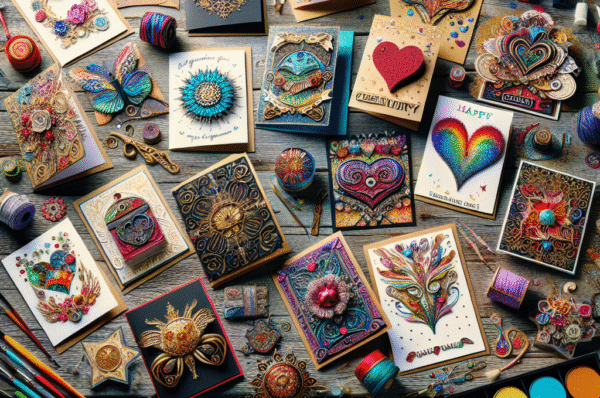Unlocking Nostalgia: The Resurgence of Trading Cards in 2023
In a digital age dominated by high-resolution graphics and virtual experiences, one might assume that tangible collectibles would slowly fade into obsolescence. Yet, in 2023, trading cards have experienced an unexpected renaissance, captivating a new generation of collectors while simultaneously reigniting the passion of seasoned enthusiasts. This remarkable resurgence sheds light on the enduring power of nostalgia and the unique value of physical collectibles in an increasingly virtual world.
The Roots of Nostalgia
Trading cards have a rich history, tracing back to the late 19th century when they were first included in cigarette packs as promotional items. Through the decades, they evolved, branching into various categories—sports, gaming, movies, and more. The 1980s and 1990s marked a golden age, with Pokémon, Magic: The Gathering, and baseball cards captivating millions. However, trends wavered, and by the late 2000s, many dismissed trading cards as a vestige of bygone days.
Fast forward to 2023, and the scene has dramatically changed. With a pandemic lingering in the rearview mirror, people are craving connection with their childhoods, striving to rekindle hobbies that once brought joy. The tactile experience of trading and collecting cards taps into a deeper emotional reservoir—a sense of community, competition, and nostalgia that a screen simply cannot replicate.
The Digital-Physical Partnership
Interestingly, the resurgence of trading cards has been significantly influenced by digital platforms. Social media has transformed into a marketplace and community hub where collectors share their finds, showcase their collections, and trade cards across the globe. Platforms like TikTok and Instagram have given rise to a new wave of creators who unbox packs, highlight rare cards, and document their personal collections, thus inspiring others to explore the world of trading cards.
Additionally, the convergence of trading cards with digital collectibles, specifically NFTs (non-fungible tokens), has broadened the audience. While traditionalists might view digital cards with skepticism, the fusion of physical and digital—where collectors can own both a tangible item and a digital counterpart—has made trading cards more relevant to younger audiences who are accustomed to online interactions.
The Market Dynamics
The economics of trading cards have also shifted dramatically. The value of rare cards has soared in recent years, fueled by heightened interest and investment from high-profile personalities, including athletes, musicians, and influencers. Auctions for sought-after cards have reached staggering amounts, sometimes soaring into the millions. The booming market is not merely speculation; it’s a testament to the cards’ perceived intrinsic value as part of pop culture history.
In 2023, we see an influx of new companies revamping the trading card sector, creating innovative products that appeal to various demographics. Brands are releasing limited editions and exclusive sets, often surrounding major events or anniversaries. These marketing strategies have revitalized interest, leading to sellout prints and an ever-growing secondary market.
The Culture of Collecting
Collecting trading cards is about more than ownership; it’s a rich cultural tapestry that weaves together friendships, competition, and storytelling. Card shows and conventions have seen a resurgence, often featuring special guests, exclusive releases, and opportunities for fans to connect over shared interests. Online platforms and gaming conventions have also embraced trading cards, incorporating gameplay mechanisms that trigger nostalgic fun while introducing new twists.
Additionally, community events have sprung up across the globe, where players and collectors gather to celebrate their passion, participate in tournaments, and engage in trading—reviving the camaraderie that once defined the hobby. This sense of belonging has nurtured a vibrant culture, where the thrill of finding a rare card is accentuated by the relationships formed within the community.
Conclusion
As we navigate through 2023, the resurgence of trading cards is not just a trend; it symbolizes a collective longing for nostalgia and meaningful connection. The world of trading cards has proven that even in an era dominated by technology, there remains an appetite for the tangible and the personal. As collectors swap stories, trade cards, and pass on their passions to future generations, trading cards continue to unlock cherished memories and forge lifelong connections.
In an age of fast-paced digital transactions, the simple act of flipping through a binder of cards or gathering at a local shop to trade with friends becomes a treasured experience, revealing once again the power of nostalgia in shaping our lives and communities. The future of trading cards looks bright, bridging the past and present in a delightful fusion of joy, nostalgia, and collectibility.




